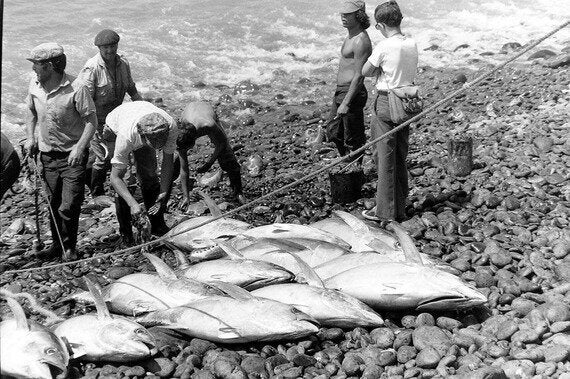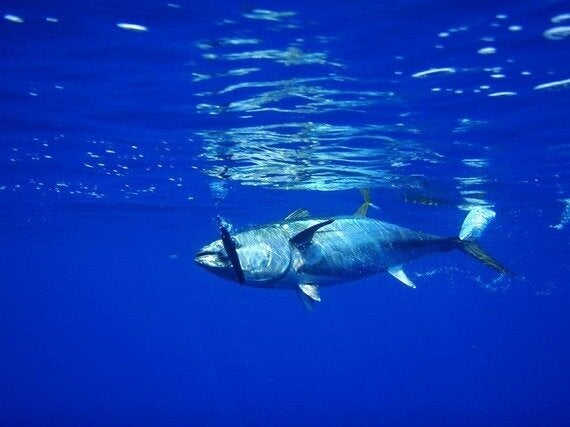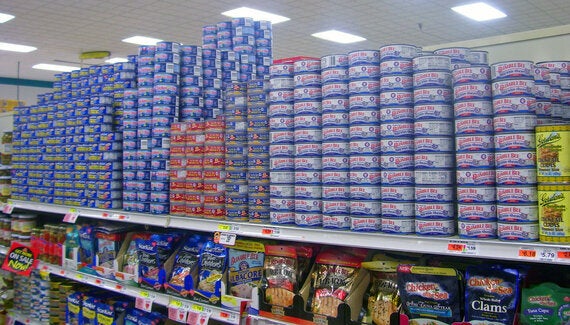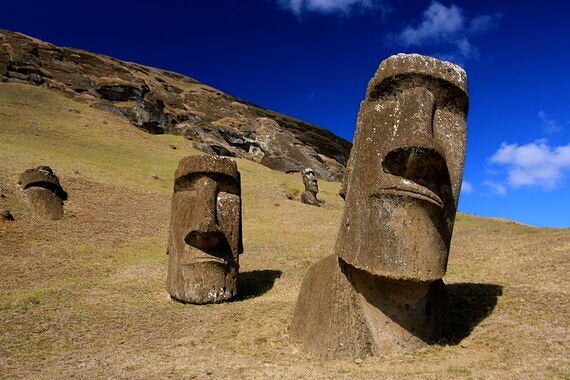
The plight of tuna fish is becoming worse and worse. Despite its place as a household-favourite the saltwater-swimmer is becoming increasingly endangered due to illegal and unsustainable fishing. This week Greenpeace released their Tinned Tuna League Table which highlights some big name brands who are only adding to tuna's troubles.
Tuna-Takeoff
The amount of tuna fished per year shot up rapidly in the latter half of the 20th century - in 1940 the annual global tuna catch was estimated at 300,000 tons, but this had shot up to 1 million tons by 1960. However, this statistic is dwarfed by the most recent figures, which suggest that anywhere between 4 and 4.5 million tons of Tuna are caught every year. Huge global demands for the fish have even seen the prices of individual tuna skyrocket, in fact in 2013 one tuna sold in the Tokyo Metropolitan Central Wholesale Market for close to £1.1 million!

Spectacular prices are not the only outcome of the increased demand for tuna. Unfortunately the growing taste for it has also had dramatic impacts on its population numbers, the marine environment, and the livelihood of other marine animals - all a result of unsustainable tuna fishing. But what makes fishing 'sustainable' or 'unsustainable'? Well if a fishery can maintain their practices indefinitely without affecting the tuna's ability to maintain its population, impact on the local ecosystem, or damage the environment, it is deemed to be sustainable. Rod and line fishing is seen as sustainable, while techniques such as bottom-trawling, which destroys the marine environment, and pair trawling, which is regularly at fault for catching non-target species such as dolphins or sharks, are seen as unsustainable.

Choosing the right tuna
Luckily for us Greenpeace's Tinned Tuna League Table can help us steer clear of those brands who are bringing us unsustainably caught tuna, and guide us towards those companies who are keen to help protect marine species and the marine environment. At the bottom of the table is John West who despite promising to deliver 100% sustainable tuna by 2016 has only managed a meagre 2%. They are closely followed by Princes, who had promised 100% sustainability by the end of 2014, yet their figure only stands at 25%. It's not all bad though - on the other end of the spectrum Waitrose, Marks and Spencer, Sainsbury's, Tesco and Aldi all deliver 100% sustainably caught tuna in their own brand tins, so stick to those when you're out on the prowl for a good can of tuna.

And in other news...
It's not just these supermarkets that are delivering terrific tuna-related news. The president of Chile, Michelle Bachelet, this week pledged to create one of the world's biggest marine parks. An area roughly the size of 630,000 sq km surrounding the famous Easter Island will be made fishing free, apart from the waters up to 50m out in which local fisherman from the indigenous population, the Rapa Nui, will still be allowed to fish. The project has drawn approval from the Rapa Nui themselves, as well as business magnates and world leaders such as Richard Branson and Barack Obama.

Tuna has become such a common sight in shops that it would be easy to think that a lot is being done to protect them from unsustainable and illegal fishing methods, but now you know that this is not the case make sure you fight for their rights!
By Alistair Ross - Online Journalism Intern
Frontier runs conservation, development, teaching and adventure travel projects in over 50 countries worldwide - so join us and explore the world!
See more from our volunteers #Frontiervolunteer
